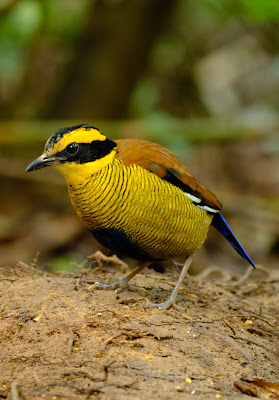There are a few endemic spiderhunter in Borneo. One of them is this Bornean Spiderhunter. Apparently this tree with its longish pinkish is a favorite of spidenhunters (with their long beak) and even sunbirds. I not sure of the plants name but it may be epiphhytic rhododendron flowers.
We were hoping to see the rarity Whitehead's spiderhunter but it was absent. Instead we got this lifer. By the way there was a same tree in KNP right behind the canteen as pointed out by Ikwan but it was not flowering. Now you know look for the tree with this flower to get a glimpse of this elusive Whitehead's for many who have yet to see including yours truly.....
We were shooting from a distance of almost 200 feet range up in this tall tree. The picture is fully cropped. Unfortunately we were shooting in the late afternoon after the session in hide. If it was in the morning we may have got a chance to see the Whitehead's .....sign.
Medium-sized spiderhunter with an olive back and streaked gray underparts. Inhabits lowland and submontane forests and forest edges, where it feeds primarily on nectar in the understory; favors blossoms of banana and ginger. Very similar in appearance to Gray-breasted Spiderhunter; range overlap is poorly understood but appears to be minimal. Look for Bornean’s more intensely streaked underparts and slightly larger size. Long-billed Spiderhunter can show some streaking on the breast but is much larger and longer-billed, with yellowish underparts. Sometimes noisy, giving loud raspy nasal calls. (ebird)































